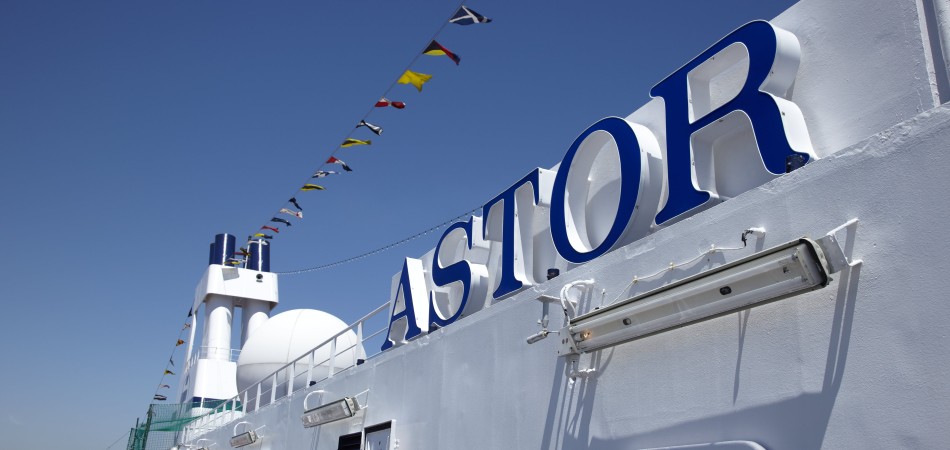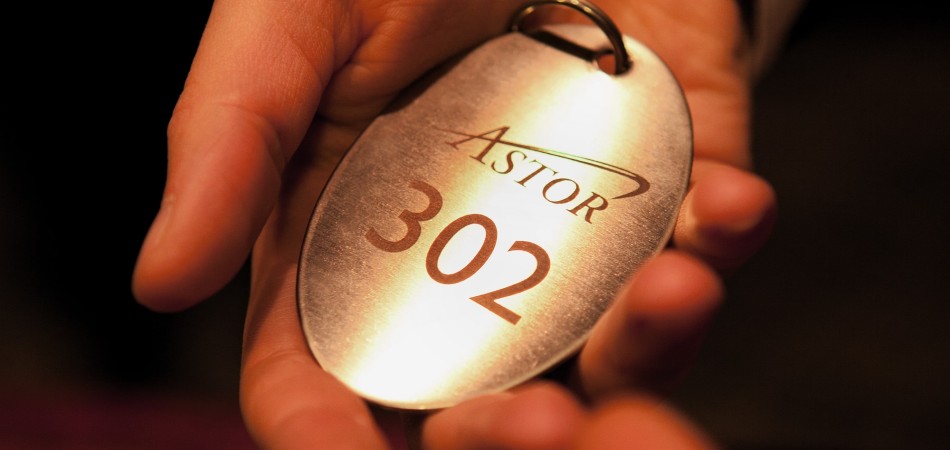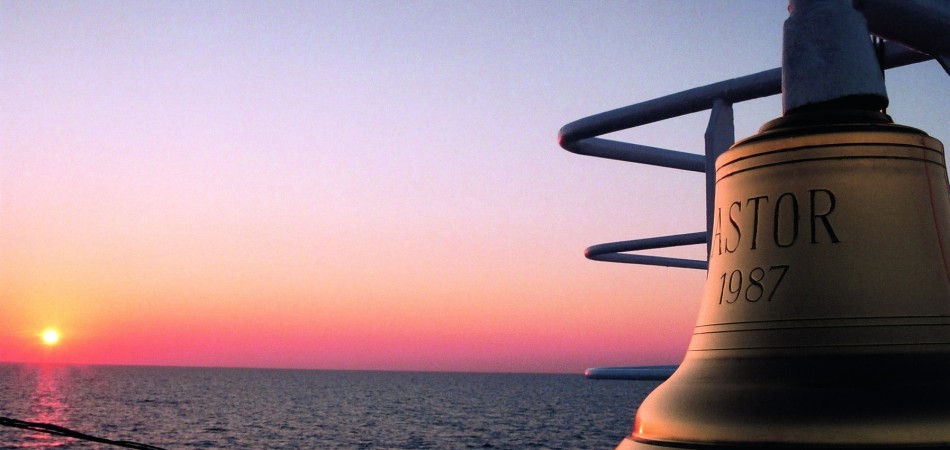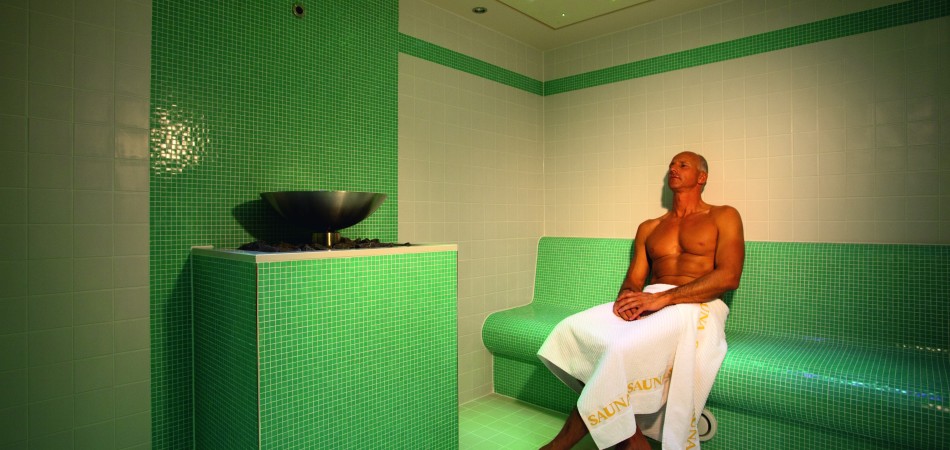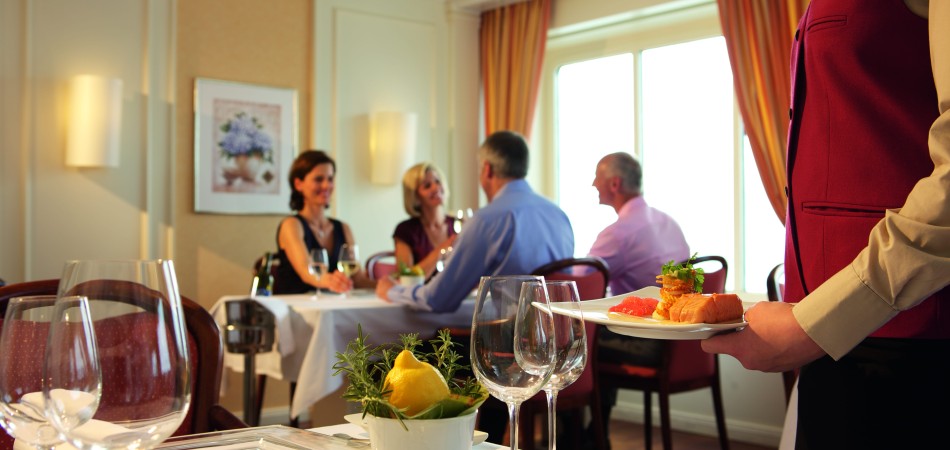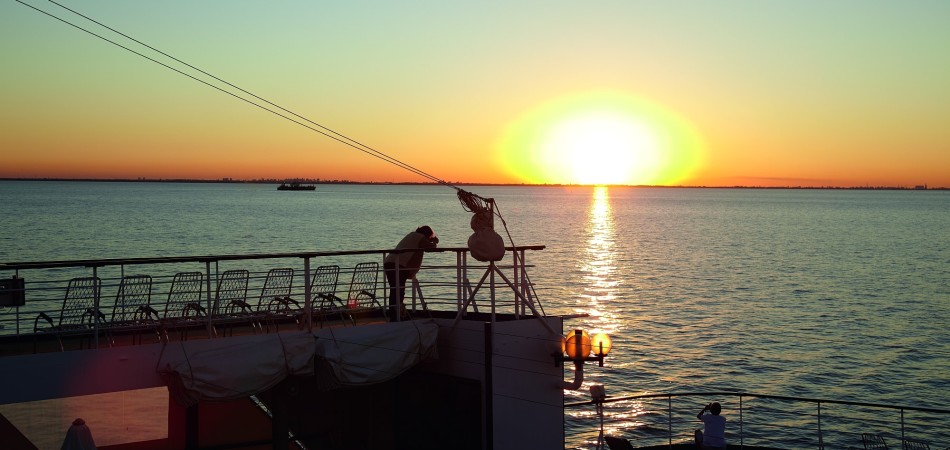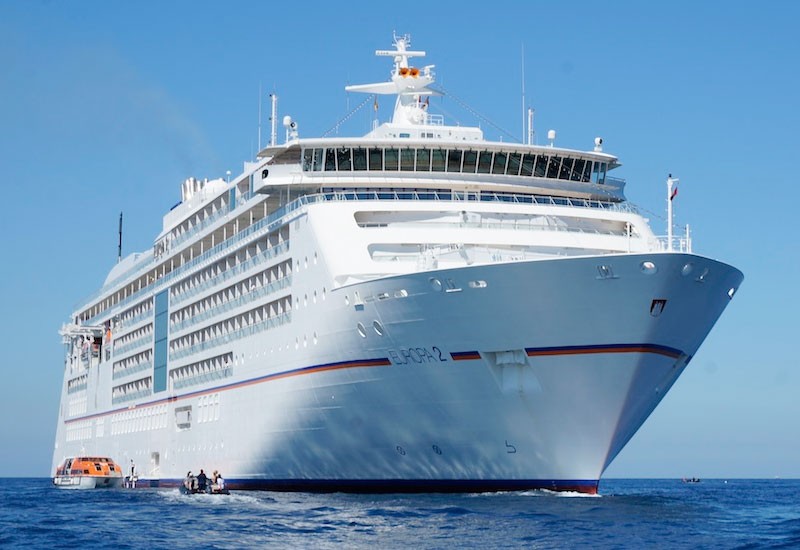Baltic Sea onboard Astor sailing from Kiel, Germany, 24 April 2019, 11 nights
Carrying only 600 passengers, the Astor provides guests with an intimate environment ideal for relaxation.
Carrying only 600 passengers, the Astor provides guests with an intimate environment ideal for relaxation. With fine cuisine, high class entertainment, comfortable lounges and accommodation, the philosophy of the crew onboard is simply to ensure your voyage is an outstanding and memorable experience.
Itinerary
| DATE | PORT | ARRIVALS | DEPARTURE | |
|---|---|---|---|---|
| 24/4/19 | Kiel (Germany) | – | 17:00 | |
| 25/4/19 | Rest at sea | – | – | |
| 26/4/19 | Stockholm (Sweden) | 08:00 | 17:00 | |
| They approach Sweden’s magnificent, spacious capital through an archipelago of about 24,000 skerries and islets. Stockholm is itself built on 14 islands, which are connected by about 50 bridges. Founded in 1252, Stockholm evolved from Gamla Stan. The charming old town consists of a labyrinth of medieval streets and tiny lanes along 16th-century buildings. At many houses you can still discover the wrought-iron signs of the old artisan guilds. The Royal City Park Djurgården is a beautiful mix of parkland and woodland. The island is home to the magnificent Wasa Museum, which showcases the upscale Swedish warship that sank during its maiden voyage in the 17th century. | ||||
| 27/4/19 | Helsinki (Finland) | 12:00 | 18:30 | |
| Finland’s capital is a modern, vibrant city yet is very much in tune with the surrounding nature. The majestic Senate Square, lined with elegant neoclassical buildings and the imposing Lutheran cathedral with white Corinthian columns and five green domes, forms the center of the city. An eye-catching exception to Helsinki’s unified architectural style is the Russian Orthodox Uspenski Cathedral with its onion domes. It rises on a hill at the end of the marketplace and dominates the skyline of the city. Built in massive rock, Temppeliaukio, better known as the Felsenkirche, also presents itself as a rather unusual place of worship. There are plenty of museums, some of the most notable being the National Museum of Finland, | ||||
| 28/4/19 | St. Petersburg (Russia) | 09:00 | – | |
| Peter the Great founded St. Petersburg in 1703 as “Window to the West”. Inspired by Europe, the Russian Tsar and his followers created an extraordinary city on the banks of the Neva, whose opulent palaces, grand churches and beautiful parks make up a highly elegant architectural ensemble. The grandiose Hermitage with its priceless art treasures, the incomparable splendor of the Catherine Palace in the former Pushkin and the golden fountains in the gardens of Peterhof testify to the elaborate lifestyle of the once ruling Tsars and nobility. St. Petersburg is considered the birthplace of the Russian Ballet, making it the perfect place to enjoy a masterful dance performance in the evening. | ||||
| 29/4/19 | St. Petersburg (Russia) | – | 18:00 | |
| Peter the Great founded St. Petersburg in 1703 as “Window to the West”. Inspired by Europe, the Russian Tsar and his followers created an extraordinary city on the banks of the Neva, whose opulent palaces, grand churches and beautiful parks make up a highly elegant architectural ensemble. The grandiose Hermitage with its priceless art treasures, the incomparable splendor of the Catherine Palace in the former Pushkin and the golden fountains in the gardens of Peterhof testify to the elaborate lifestyle of the once ruling Tsars and nobility. St. Petersburg is considered the birthplace of the Russian Ballet, making it the perfect place to enjoy a masterful dance performance in the evening. | ||||
| 30/4/19 | Tallinn (Estonia) | 9.30 | 16:00 | |
| Estonia’s capital is a fascinating blend of Scandinavian elegance, Soviet era concrete and medieval Hanseatic city. The old town, stretching down from Toompea Hill, is a labyrinth of narrow, cobble-stoned streets and alleys, surmounted by ramparts and church towers. The intact, original medieval walled city is interspersed with mighty towers with imaginative names, with the castle and the Alexander Nevsky Cathedral with its onion domes towering above it. On the town hall square with the pretty merchant houses, the Ratsapotheke and the gothic town hall, as well as in the whole old town, not only the buildings but also the atmosphere of the 14th and 15th century survived. Not far from the city, the Rocca al Mare open-air museum shows Estonia’s rural architecture from the 18th to the 20th century. | ||||
| 05/01/19 | Riga (Latvia) | 12:00 | 19:00 | |
| 05/02/19 | Klaipeda (Lithuania) | 13:30 | 22:00 | |
| 05/03/19 | Gdańsk (Poland) | 08:00 | 23:59 | |
| 05/04/19 | Rest at sea | – | – | |
| 05/05/19 | Wismar (Germany) | 8.30 | – | |
| The medieval town of Wismar on Germany’s Baltic coast was an important trading center in the city union of the Hanseatic League in the 14th and 15th centuries. The old quarter with its typical gabled houses and cobblestone streets is a beautiful piece of history from the heyday of the Hanseatic city. Wismar was declared a UNESCO World Heritage Site in conjunction with Stralsund. The masterpieces of the characteristic brick Gothic include the Fürstenhof, the Archdeaconon and the Marienkirchturm. Two of the excursions on offer lead through Mecklenburg-Vorpommern to the exciting and multi-layered capital of Berlin and the sophisticated, cosmopolitan Hamburg, which lies so beautifully on the Elbe and Binnenalster. | ||||
Note: In case of bad weather or sea conditions that prevent the ship from reaching a planned port, alternative arrangements will be made as far as possible.
![]() Ship is at anchor
Ship is at anchor
* Technical stop, guests can not go ashore
For more information about the Astor please click here
To inquire about this cruise please type in the comment box below. Please include your name, telephone number and email address and we will contact you. Alternatively please call us on 0844 995 1214. We look forward to hearing from you.

